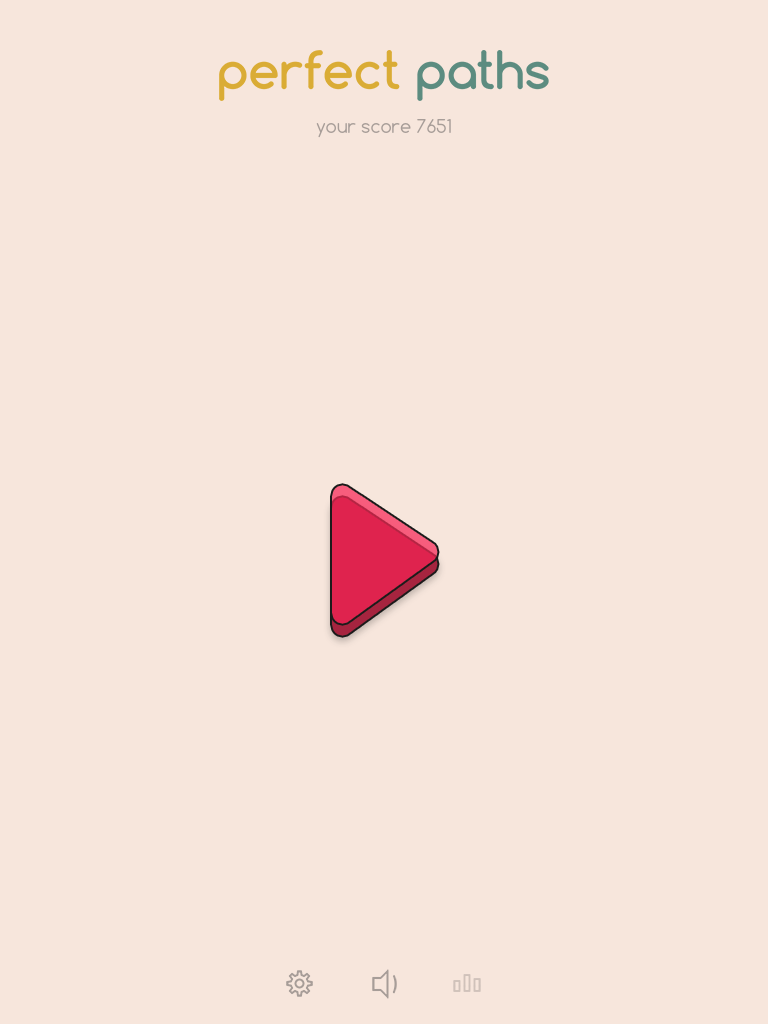Hyperbolic Magnetism, in the person of Jan Split Ilavsky, surely knows how to make puzzle games that stand out from the crowd. Perfect Paths is his best so far.
Perfect Paths is based on the previous Trappped, an iPad-only game which I think was let down by the layout of the user interface. While they share the basic mechanics, everything else has been improved so much that it can be considered a wholly new game.
Thursday, May 29, 2014
Tuesday, May 27, 2014
Review: Kuub for iPhone and iPad
Kuub by Wim Coosemans is a well designed tilt maze puzzle on the vein of Blockhouse.
Tile mazes are a well estabilished genre, and Kuub succeeds in adding new elements and ideas to keep the mechanics fresh and stimulating.
Tile mazes are a well estabilished genre, and Kuub succeeds in adding new elements and ideas to keep the mechanics fresh and stimulating.
Wednesday, May 21, 2014
Review: WrapSlide for iPhone and iPad
The Rubik's Cube turned 40 recently, and there's little doubt that it has been one of the most influential puzzles ever invented. Many puzzle games on the App Store compare themselves to the Cube, but in most cases that's just marketing fluff. WrapSlide, however, is a different story.
Developed by Alewyn Burger, a researcher at Stellenbosch University (South Africa), it might look like just another toroidal sliding block puzzle. But looks, in this case, are very deceiving. The movement mechanics are different from the usual ones, and produce a very challenging puzzle.
Developed by Alewyn Burger, a researcher at Stellenbosch University (South Africa), it might look like just another toroidal sliding block puzzle. But looks, in this case, are very deceiving. The movement mechanics are different from the usual ones, and produce a very challenging puzzle.
Sunday, May 18, 2014
Review: Membrane for iPhone and iPad
A couple of months ago I tweeted about Membrane by Michael Stephens. I didn't find time to review it until now, which is all the more reason to follow me on Twitter so you don't lose any worthy puzzle game.
At first glance, Membrane might look like yet another clone of Move the Box, a game which I've seen copied so many times that I'm not even sure if it's an original idea itself. On closer inspection, however, Membrane has interestingly different mechanics that add a lot of depth.
At first glance, Membrane might look like yet another clone of Move the Box, a game which I've seen copied so many times that I'm not even sure if it's an original idea itself. On closer inspection, however, Membrane has interestingly different mechanics that add a lot of depth.
Monday, May 12, 2014
Review: Find Figure for iPhone and iPad
A couple of weeks ago I tweeted about Find Figure by Art Studio Dereza. Currently I'm not updating this blog as often as I would like to, but I talk about interesting new games on Twitter first, so make sure to follow me to be up to date with puzzle games news.
I find that my mind takes particular enjoyment in puzzles that require visual-spatial ability. This tends to show in the games I develop, especially in Twin Beams, a difficult puzzle which however can be solved at ridiculously high speeds if one just looks for visual patterns. Find Figure is a lot easier, but it's also more complex than it might look at first sight.
I find that my mind takes particular enjoyment in puzzles that require visual-spatial ability. This tends to show in the games I develop, especially in Twin Beams, a difficult puzzle which however can be solved at ridiculously high speeds if one just looks for visual patterns. Find Figure is a lot easier, but it's also more complex than it might look at first sight.
Sunday, May 4, 2014
Review: Bicolor for iPhone and iPad
Bicolor is the latest creation of 1Button, a team specializing in puzzle games with a minimalist interface. It marks a significant evolution from the style of their previous games: SEQ, ON/OFF, and PILE.
Continuing in their effort to "create applications not polluted by useless distractions", they have stripped away even color, leaving only the core puzzle elements at the center of the scene.
Continuing in their effort to "create applications not polluted by useless distractions", they have stripped away even color, leaving only the core puzzle elements at the center of the scene.
Labels:
path,
sequential movement
Subscribe to:
Comments (Atom)






